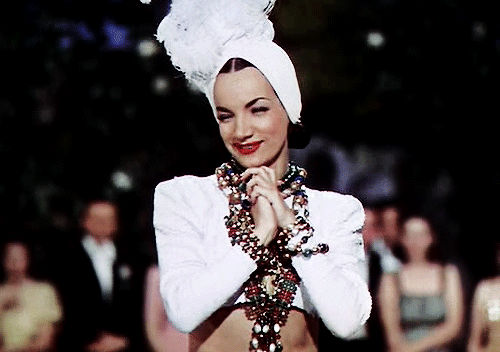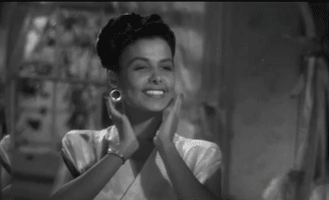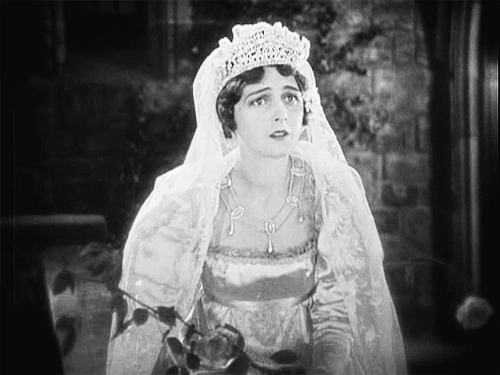Lauren Bacall provou que
era ótima na comédia em 1953 com “Como Agarrar um Milionário”. Em 1957, ela
substituiu Grace Kelly em uma comédia ao lado de um ator que foi uma escolha
incomum para protagonista cômico: Gregory Peck! Com isso, é fácil ver, desde o
início, que “Teu Nome é Mulher” não é um filme comum.
Lauren Bacall had proved
that she was great at comedy in 1953 with “How to Marry a Millionaire”. In
1957, she replaced Grace Kelly in a comedy alongside an unusual choice for
comic leading man: Gregory Peck! With this, it’s easy to see, from the
beginning, that “Designing Woman” is not a common film.
“Teu Nome é Mulher”
começa com cinco personagens quebrando a quarta parede e falando sobre certo “caso
de Boston”. Finalmente, o primeiro personagem, interpretado por Gregory Peck,
começa a contar o que aconteceu. Mike Hagen (Peck) está de ressaca após uma
noite da qual ele não se lembra. Os efeitos sonoros são altos e exagerados,
para que o espectador se sinta como o Mike de ressaca se sente: mesmo um
alfinete tocando no fundo de uma lata de lixo o incomoda.
“Designing
Woman” starts with five characters breaking the fourth wall and talking about a
certain “Boston affair”. Finally, the first character, played by Gregory Peck,
starts telling what happened. The flashback begins. Mike Hagen (Peck) is hung-over
after a wild night that is not stored in his memory. The sound effects are loud
and exaggerated, in order to make us feel like hung-over Mike feels: even a pin
hitting the bottom of a trash can bothers him.
Na noite
anterior, enquanto estava bêbado, Mike conheceu e levou Marilla Brown (Lauren
Bacall) para um bar. Lá ela o ajudou a escrever um artigo para sua coluna
esportiva num jornal, e ele deu a ela 700 dólares como recompensa. Na manhã
seguinte, ela devolve o dinheiro para Mike e, agora sóbrio, ele percebe que
gosta da companhia dela. Logo – logo mesmo – eles estão casados.
The night
before, while drunk, Mike had met and taken Marilla Brown (Lauren Bacall) to a
bar. There she helped him write an article for his sports column at the
newspaper, and he gave her 700 dollars as a reward. The morning after, she
returns Mike the money and, now sober, he realizes he enjoys her company. Soon
– too soon – they're married.
Mike e
Marilla não sabem muito um sobre o outro. Quando eles voltam para Nova York,
descobrem que não poderiam ser mais diferentes. Mike é colunista esportivo,
Marilla é estilista. Mike morava em um apartamento que era como uma caixa de
sapatos, Marilla o convenceu a se mudar para o apartamento dela, um lugar
chique onde ela recebe seus amigos da alta sociedade. Mike tinha um
relacionamento complicado com a atriz e cantora Lori Shannon (Dolores Gray),
enquanto o produtor teatral Zachary Wilde (Tom Helmore) queria se casar com
Marilla.
Mike and
Marilla don't know much about each other. When they fly back to New York, they
find out they couldn't be more different. Mike is a sports columnist, Marilla
is a clothes designer. Mike lived in an apartment that is like a shoebox,
Marilla convinces him to move to her place, a chic apartment where she receives
her high society friends. Mike had a thing going on with actress / singer Lori
Shannon (Dolores Gray), while theater producer Zachary Wilde (Tom Helmore)
wanted to marry Marilla.
Marilla
não suporta o fato de que Mike precisa assistir a lutas de boxe para o
trabalho, e acha o amigo dele, Maxie (Mickey Shaughnessy), um ex-boxeador, muito
estranho. Mike também não aprova os amigos de Marilla que estão montando uma
peça de teatro, em especial o extravagante coreógrafo Randy (Jack Cole,
coreógrafo do filme). Mas as coisas só começam a se complicar quando Marilla,
Zach e Lori passam a trabalhar na mesma peça, e Mike desagrada o magnata do
boxe Mart Daylor (Edward Platt) e começa a receber ameaças.
Marilla can't
stand the fact that Mike needs to watch boxing matches to work, and finds his
friend Maxie (Mickey Shaugnessy), a former boxer, a weird guy. Mike also
disapproves Marilla's friends from a theater play, in special the extravagant
choreographer Randy (Jack Cole, the film's real choreographer). But things only
start getting complicated when Marilla, Zach and Lori start working in a
theater play, and Mike displeases boxing mogul Mart Daylor (Edward Platt) and
starts receiving threats.
Isso não é
algo que você escuta todo dia, mas Gregory Peck está hilário neste filme. Como
Mike, ele tem a oportunidade de mostrar seu talento tanto na comédia física quanto
na hora de reagir a um acidente bastante incomum. Infelizmente, nem tudo é
divertido: um elemento que envelheceu mal foi o tratamento de Maxie. Maxie é um
homem que certamente teve danos cerebrais causados pela violência do boxe, e
não foi certo usá-lo para causar riso.
This is not
something you read every day, but Gregory Peck is hilarious in this film. As
Mike, he has the opportunity to show his talent both in slapstick comedy and by
doing deadpan faces as a reaction to a very uncommon incident. Unfortunately,
not everything is fun: a bit that has aged badly is Maxie's treatment. Maxie is
a man who certainly has had brain damage thanks to his boxing career, and it
was not nice to use him to make the public laugh.
“Teu Nome
é Mulher” deveria ser um projeto para Grace Kelly e James Stewart. Grace deixou
Hollywood para se casar com o príncipe Rainier de Mônaco, e Stewart abandonou o
projeto. Lauren Bacall e Gregory Peck, os novos protagonistas, se tornaram
grandes amigos, uma amizade que durou o resto da vida. Mas o grande destaque do
filme é mesmo o coreógrafo Jack Cole como Randy.
“Designing
Woman” was meant to be a vehicle for Grace Kelly and James Stewart. Grace left
Hollywood to marry Prince Rainier of Monaco, and Stewart abandoned the project.
Lauren Bacall and Gregory Peck, the new leads, became good friends, a friendship
that last until the end of their lives. But the MVP in this film is indeed
choreographer Jack Cole as Randy.
“Teu Nome
é Mulher” tem uma história curiosa: o filme foi escrito por George Wells,
também produtor associado, e foi baseado em uma ideia da estilista Helen Rose!
Wells ganhou o Oscar de Melhor Roteiro Original, embora muitas pessoas na
indústria do cinema acreditassem que a trama era muito parecida com outro
filme, “A Mulher do Dia”, de 1942 – o que eu não acredito. Há uma coisa,
entretanto, com a qual todos concordamos: “Teu Nome é Mulher”, assim como todos
os filmes de Vincente Minnelli, é uma delícia.
“Designing
Woman” has a very unique background: this film was written by George Wells,
also associate producer, and based on an idea given by stylist Helen Rose!
Wells won the Oscar for Best Original Screenplay, although many people in the
industry believed the plot followed too closely another film, 1942’s “Woman of
the Year” – I don’t think so. There is one thing, however, that we all can
agree with: “Designing Woman”, as all of Vincente Minnelli’s films, is
delightful.
This is my
contribution to the Third Annual Lauren Bacall blogathon, hosted by Crystal at
In the Good Old Days of Classic Hollywood.






































